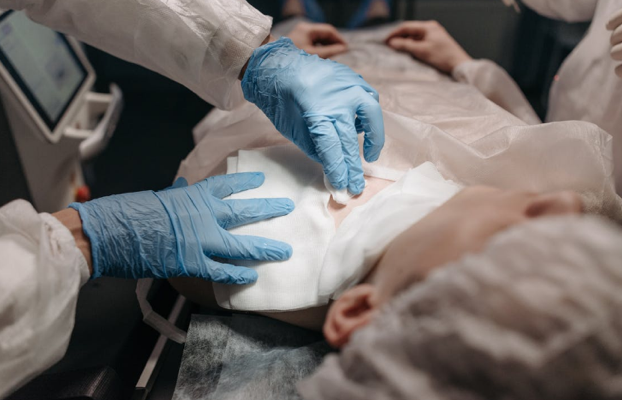Do you need a vascular surgeon for deep vein thrombosis? When you develop a thrombus or blood clot in a deep vein of your body, it leads to deep vein thrombosis. Even though the condition occurs in a different part of the body, it affects the legs most frequently. If you are suffering from deep vein thrombosis, you will experience swelling and pain in your leg. Of course, it’s also possible to develop this condition without any symptoms.

(Source)
Most people develop blood clotting underlying various medical conditions and illnesses, leading to DVT. You may develop a blood clot in the legs if you don’t move for a long time. This pertains to situations like traveling for long hours on a bus, facing an accident, undergoing surgery, or getting longer bed rest.
Deep vein thrombosis is a critical condition as solid blood clots can travel through your veins and cause damage to the lungs. This thrombosis condition can lead to pulmonary embolism, which implies a blockage of blood to the lungs.
Cause of Deep Vein Thrombosis
DVT occurs after your blood clots in the vein. When this happens, your bloodstream acts inefficiently while circulating. Blood can clot in your vein for numerous reasons. The causes are:
· Surgery
When you undergo surgery, it can cause more damage to your blood vessels. This causes blood to clot. Even when you are on bed rest, during the surgery, your veins will start to clot because of limited movement.
· Injury
When you suffer from an injury that damages the blood vessel lining, the vein grows narrow. This affects the bloodstream and leads to blood clotting.
· Inactivity or Less Mobility
If your routine includes limited amounts of activity, you are prone to developing blood clots in the legs. This condition is common in the lower part of your body. When you continue sitting for long periods, you will develop blood clots due to slower blood circulation.
· Various Medications
Many medications increase your risk of developing blood clots in the veins. You need to check the side effects of the medication you take.
Treatment for Deep Vein Thrombosis
When experiencing deep vein thrombosis, visit a vascular surgeon so they can diagnose, analyze, and treat your condition, thereby preventing any complications:
1. Compression Stockings
Compression stockings are tight stockings that can offer different levels of compression. This treatment for deep vein thrombosis prevents the clot from increasing in size. Furthermore, the blood clot will not come loose and flow to your lungs. You can also wear compression stockings to reduce the risk of facing deep vein thrombosis. Your vascular surgeon can suggest the best compression level after analyzing your condition.
Wearing these knee socks will also decrease your chance of developing varicose veins. If you suffer from deep vein thrombosis, these stockings can help with swelling. You need to wear these stockings from your feet to your knees throughout the day. Wearing them as you perform different activities will help promote blood flow.

(Source)
2. Blood Thinners
Many vascular surgeons suggest anticoagulants or blood thinners for treating deep vein thrombosis. However, these medications do not break the already existing blood clots. But it can prevent blood clots from growing bigger while preventing further clots from developing. You need to ingest this medication, inject, or insert it in your blood through an IV.
Initially, the surgeon will inject a blood thinner into your body, but they will switch to a pill after few days.
3. Clot Busters
The surgeon will prescribe thrombolytics drugs if your condition is serious. They might also suggest this medication if you are having PE, a different type of DVT, or any other medication that isn’t working.
You will receive this medication through an IV or catheter (a thin tube). Surgeons will place the catheter directly in the clot. Clot busters will cause serious bleeding, so people with the severe condition will only undergo this treatment.
4. Filters
The vascular surgeon will diagnose your condition and identify if your body can accept blood-thinning medication or not. If not, they will insert a filter in your abdomen. When the surgeon adds these filters in the larger vein, the vena cava, it will prevent clots from entering the lungs, breaking them loose.
Best NYC Vascular Surgeon for Deep Vein Thrombosis: Conclusion
Deep Vein Thrombosis has severe complications and symptoms, and you should immediately seek help from a vascular surgeon if you think that you’re experiencing clotting in the veins. Leaving this condition untreated can be life-threatening.
If you’re seeking a top NYC vascular surgeon, contact us at 212-993-6133. We have highly-qualified and well-trained vascular surgeons in our clinic under the supervision of Dr. Norman Chideckel. He is a certified and skilled surgeon with plenty of experience in treating numerous vascular diseases.






